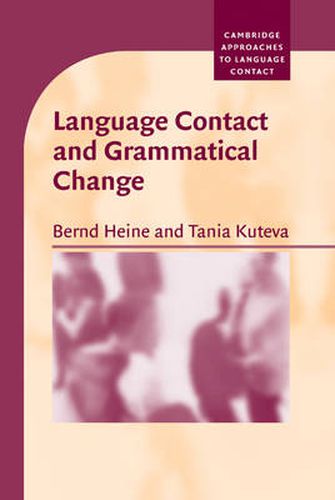Readings Newsletter
Become a Readings Member to make your shopping experience even easier.
Sign in or sign up for free!
You’re not far away from qualifying for FREE standard shipping within Australia
You’ve qualified for FREE standard shipping within Australia
The cart is loading…






The phenomenon of language contact, and how it affects the structure of languages, has been of great interest to linguists in recent years. This pioneering new study looks at how grammatical forms and structures evolve when speakers of two languages come into contact, and offers an interesting new insight into the mechanism that induces people to transfer grammatical structures from one language to another. Drawing on findings from languages all over the world, Language Contact and Grammatical Change shows that the transfer of linguistic material across languages is quite regular and follows universal patterns of grammaticalization - contrary to previous claims that it is a fairly irregular process - and argues that internal and external explanations of language structure and change are in no way mutually exclusive. Engaging and informative, this book will be of great interest to sociolinguists, linguistic anthropologists, and all those working on grammaticalization, language contact, and language change.
$9.00 standard shipping within Australia
FREE standard shipping within Australia for orders over $100.00
Express & International shipping calculated at checkout
The phenomenon of language contact, and how it affects the structure of languages, has been of great interest to linguists in recent years. This pioneering new study looks at how grammatical forms and structures evolve when speakers of two languages come into contact, and offers an interesting new insight into the mechanism that induces people to transfer grammatical structures from one language to another. Drawing on findings from languages all over the world, Language Contact and Grammatical Change shows that the transfer of linguistic material across languages is quite regular and follows universal patterns of grammaticalization - contrary to previous claims that it is a fairly irregular process - and argues that internal and external explanations of language structure and change are in no way mutually exclusive. Engaging and informative, this book will be of great interest to sociolinguists, linguistic anthropologists, and all those working on grammaticalization, language contact, and language change.